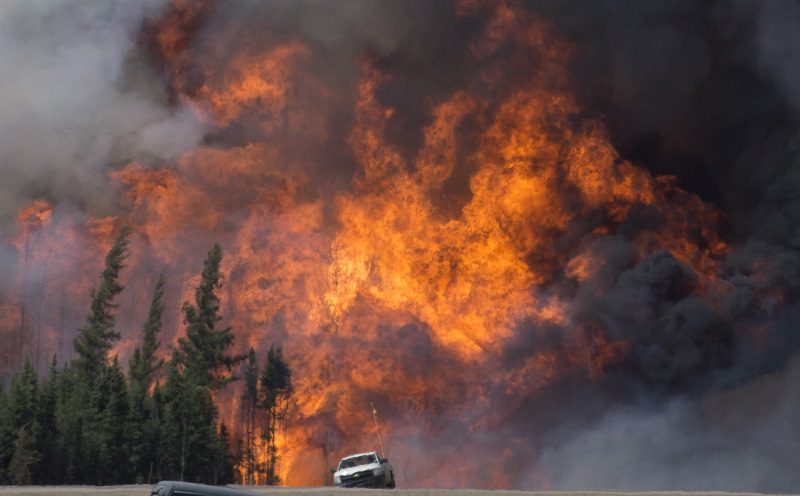What is the P&C insurance sector’s role in “building back better”?

If Canada’s property and casualty insurance industry wants Canadian homeowners to “build back better” after a natural catastrophe, it may have to revisit its foundational promise to restore a homeowner’s property to the condition it was in before the disaster.
Although this conclusion was never stated explicitly in a February 2023 Bank of Canada report on the financial impact of the 2016 wildfire in Fort McMurray, Alta., certainly the report hinted at this in a variety of ways.
For example, the report notes that in “Fort McMurray’s case, the Regional Municipality of Wood Buffalo secured $14 million in FireSmart for fire mitigation. They also launched a ‘Build Back Better’ campaign to promote the use of fire-resilient materials. However, KPMG’s (2017) independent review, commissioned by the Alberta Emergency Management Agency, suggests that this intervention is unlikely to happen because insurance payments were only available to rebuild properties to pre-fire conditions.”
Elsewhere, the report states: “Our findings [about the broader financial impact of natural catastrophes] are…valid for the ongoing concerns of climate risk because insurance coverage improves recovery outcomes but only has a modest impact on risk reduction.”
P&C insurers note pricing models are generally not designed to reflect the cost to rebuild properties so they are more resilient to future disasters. But the Bank of Canada report suggests that if resiliency is left purely to government funding, efforts to “build back better” may be curtailed due to government funding cuts.
For example, “45% of the budget for the FireSmart preventative program, which aimed to prevent wildfires through tree thinning in vulnerable communities, was cut [in late 2015],” states the Bank of Canada report, We Didn’t Start the Fire: Effects of a Natural Disaster on Consumers’ Financial Distress. “Additionally, almost 17% of the funding set aside as part of the 2011 Slave Lake Wildfire recommendations was cut. Hence, Fort McMurray and Alberta were largely unprepared to deal with the devastating impacts of the 2016 wildfire.”
The report mainly addresses the financial impact of the wildfire due to mortgage payments in arrears. The arrears payments of homeowners with severely damaged properties started to spike sooner than 90 days after the banks’ four-month payment deferrals had expired (i.e. seven months after the wildfire). This temporary period of financial distress lasted for about a year after the fire.
“The effect peaked in May 2017 with the level of the arrears increasing by 0.7%,” the report observed. “Putting this number into context, mortgage arrears in Alberta during the 2008-10 Great Recession rose by 0.67%, from 0.17% in January 2007 to 0.84% in January 2011.
“In terms of severity, our estimates show that the financial distress of affected individuals devastated by wildfires is comparable to that of the Great Recession, although the events are of different scales. This wildfire effect subsided substantially and became statistically insignificant starting in June 2017, 12 months after the disaster. The entire wildfire effect had almost dissipated by the end of 2017.”
P&C insurance had a role to play in the temporary effect of the mortgage arrears, the report noted. The lengthy claims process may have been one of several contributors to the financial stress experienced by the homeowners who had lost their homes.
For example, it noted homeowners who suffered extreme damage to their properties as a result of the fire were having trouble paying back their loans due to a variety of factors, the report noted. Among them, for some P&C insurers, their insurance payments were often delayed partly due to the massive amount of claims they had to resolve within a short timeframe. Overall, the industry paid out more than $3.4 billion in insured damages, the Bank of Canada report states.
Also, the companies’ internal risk management practices can affect the timing of their settlements, the report notes. “The risk management and practices of property and casualty insurers can affect insurance settlements, which, in turn, may induce financial stress that impairs consumers’ ability to repay their loans extended by other financial institutions.”
Overall, the report concludes the financial impact of a natural disaster on affected homeowners has spillover effects on banks, insurers and governments alike, which must be incorporated into the risk management practices of the financial sector as a whole.
Photo Credit: A giant fireball is seen as a wild fire rips through the forest 16 km south of Fort McMurray, Alberta on highway 63 on May 7, 2016. THE CANADIAN PRESS/Jonathan Hayward



